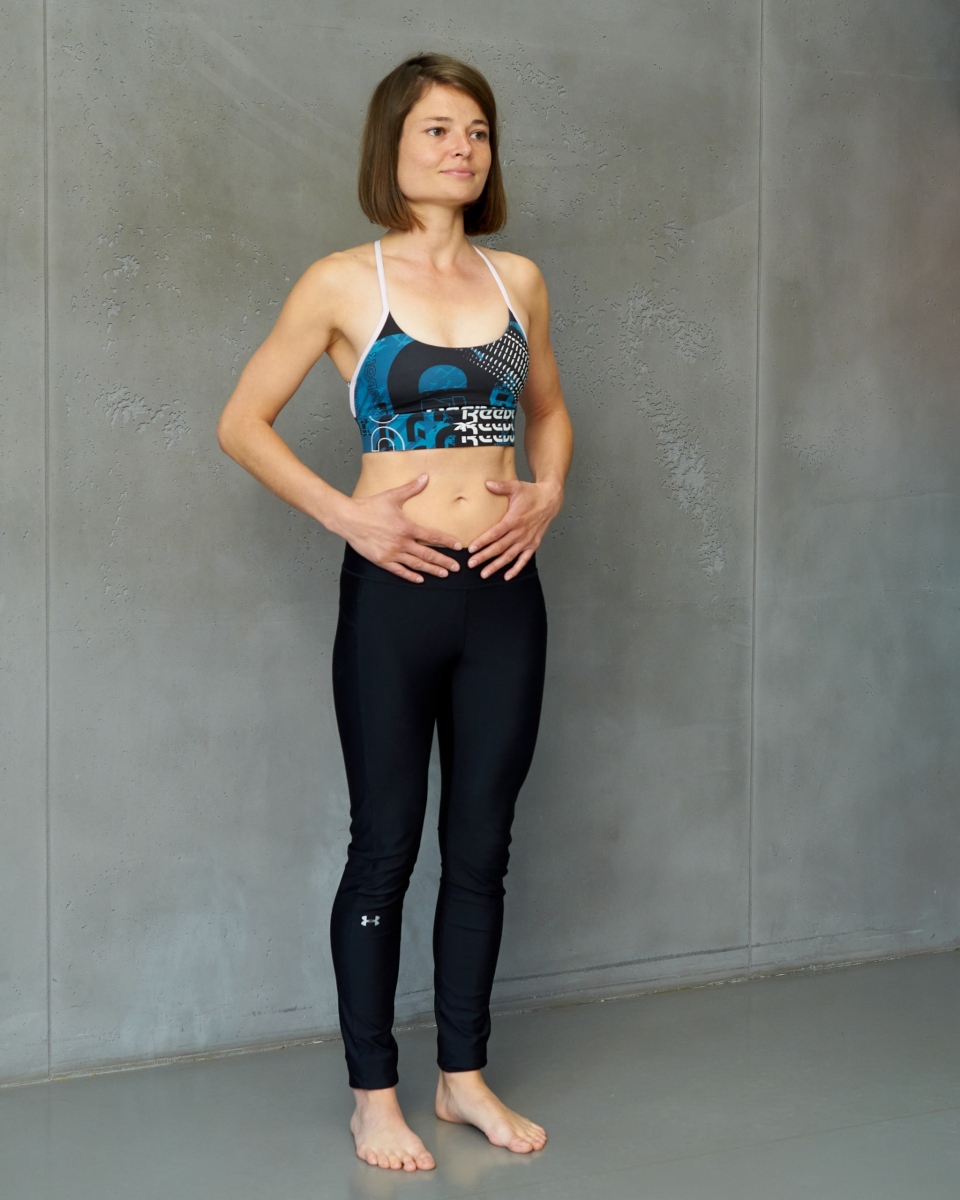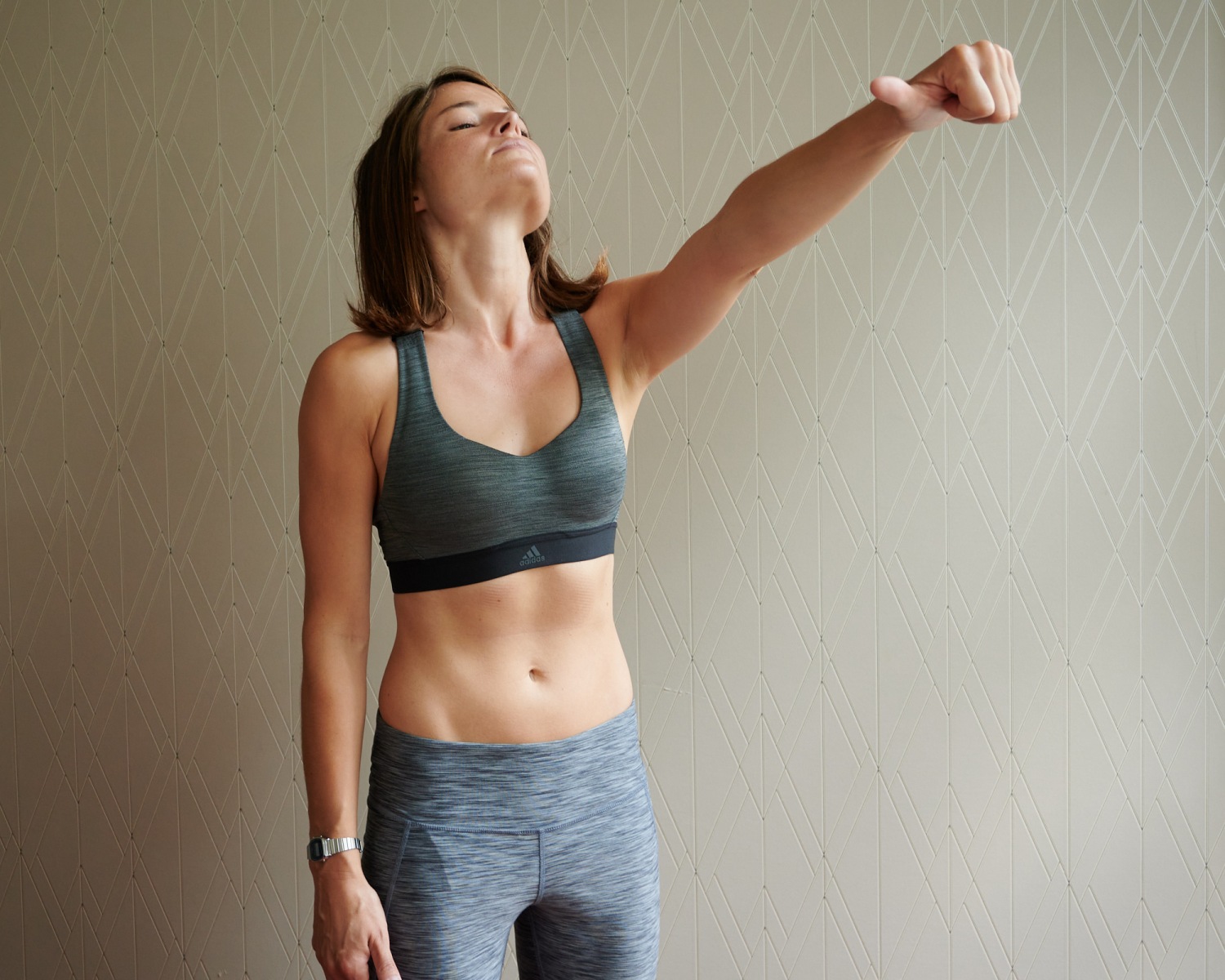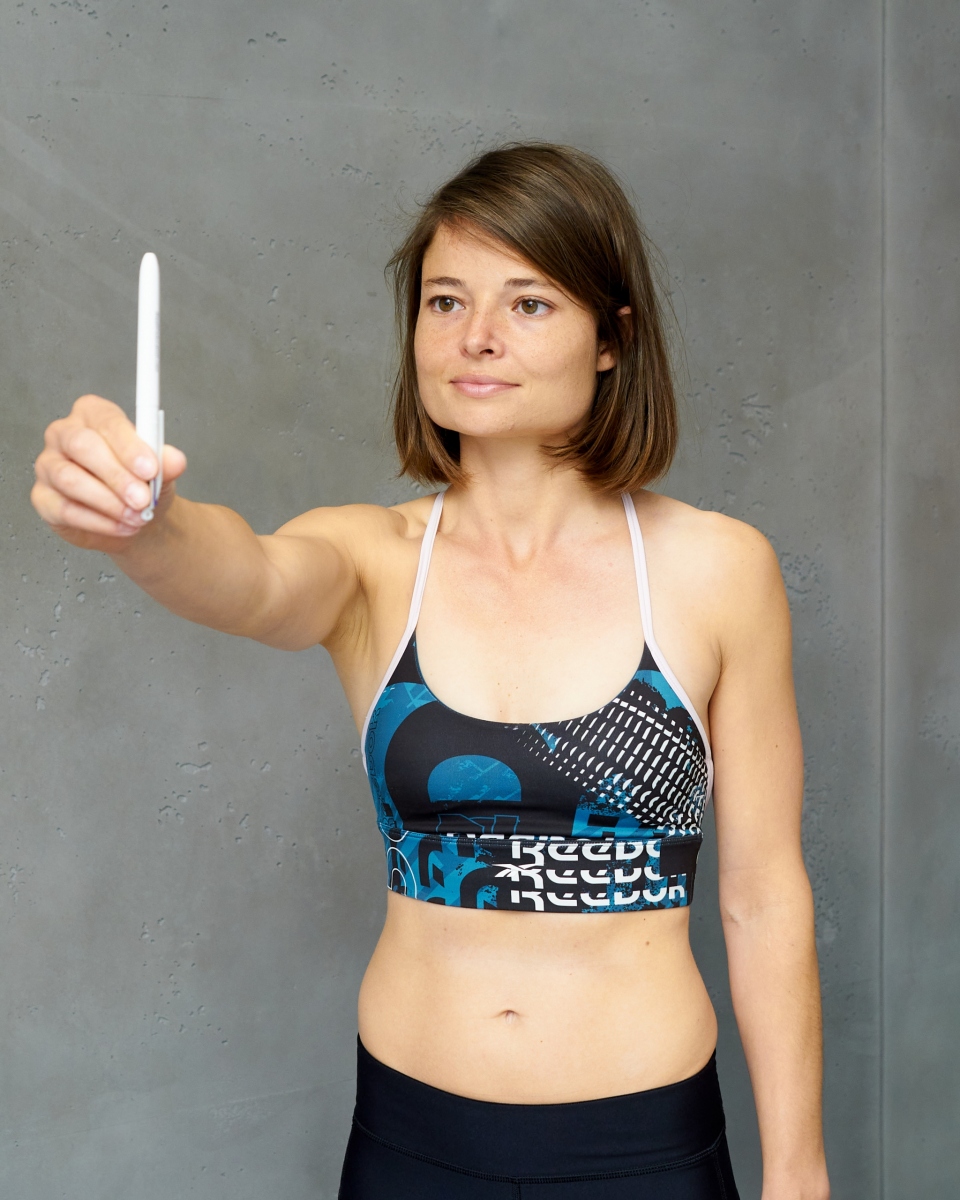Exercises and information from Luise Walther
Personal trainer and author of numerous publications on the subject of neurocentric training
What is Neurocentric Training
A new training approach promises innovation here. Neurocentric training is brain-based training that focuses on the body's neural processes. movement and Pain arise in the brain. This is where the training starts. The success of neurocentric training and its innovation depends on people's openness to change. Brain-based training starts where the disease originates, in the brain.
Fight or flight
The human fight-or-flight response ensured the survival of our ancestors. The body reacts to the incoming threat with the release of adrenaline and cortisol and thus starts a fight or flight. Even though we no longer have to flee or fight threatening animals these days, we instinctively react to everyday threats, such as stress, using the same mechanism.
stress reduction
The neurocentric training approach leads to stress reduction and promotes cognitive performance. For example, breathing and mindfulness exercises stimulate the prefrontal cortex, an area of the brain that is particularly responsible for emotions such as satisfaction, empathy, regulation and planning. It also increases the ability to learn and innovate. It can even stimulate the formation of new cells in the hippocampus. In addition to emotional regulation, this area of the brain is responsible for absorbing new information.
Neural plasticity
Neural plasticity is the basis of the positive effects of neurocentric training. It creates the perfect conditions for the formation of new neural connections.
The training increases focus and concentration.
Neurocentric training is a holistic and sustainable training system. Based on neuro-biomechanical processes, it supports everyday agility and flexibility and creates ideal conditions for overcoming traditional patterns of thought, behavior and movement
What can you train specifically?
The breathing!
Both the biochemical and the biomechanical optimization of breathing have positive effects for people with Parkinson's disease. Breathing is controlled by the central nervous system and should be three-dimensional and equal on both sides in the chest movement for optimal mobility and stability. In order for the nervous system to work well, good utilization of oxygen and carbon dioxide should also be trained.
An even expansion of the chest also has a stabilizing effect on the middle of the body and ensures stabilization and movement control. Thanks to the optimized breathing pattern, the muscles can be better supplied with oxygen during movement. This leads to increased energy production in the muscle cells and thus to better endurance.
The improvement of the oxygen supply in the brain also reduces the stress level and ensures cognitive performance.
FFor beginners who have not yet had many points of contact with breathing training, we recommend starting as follows:
Exercises
Exercise: ladder breathing
Ideally, breathing should be controlled in three dimensions. This means the rib cage and the costal arches expand evenly to the front, to the side and to the back.
To simplify and automate this, a resistance band is tied around the costal arch so that a slight pressure is felt. You should still be able to breathe relaxed. The tape gives feedback about the regularity and depth of breathing. Recommended use: morning and evening 5-10 minutes.
In order to have a lasting effect on breathing, the training intensity should be higher. In order to realistically integrate this into everyday life, the following exercise is recommended:
Exercise: breathing against resistance band
Tie a resistance band around your costal arch. The band should sit above the belly button and below the chest. Now breathe for five to ten minutes against the resistance of the band. You will notice that the rib cage and costal arches expand evenly and relax as you exhale. This exercise activates the deeper layers of muscles and improves your posture.
Movements
In order to make movement patterns run more smoothly and evenly again, you can use the training impulses of running training. The body is automatically stabilized by reflexes during complex movements. So when you run, you shouldn't fall over. And you don't have to think about whether you are tensing your core muscles or not.
However, these holding and supporting motor skills are affected by Parkinson's disease. Since the function of the basal ganglia is reduced, the movement sequences cannot be so finely coordinated with one another. The movements seem clumsy to awkward. One of the reasons for this is that the control of muscle tone, i.e. the tension in the muscles, is impaired. Harmonious and flowing movements and an upright posture are created by three movement-controlling systems:
- Eyes
- Equilibrium system
- Body awareness
In order for information from all areas of the brain to be connected and interpreted, different areas of the brain communicate with each other. The cerebellum plays a crucial role in the accuracy of movement, balance and coordination. All areas that are restricted for those affected. As already described, the cause is reduced dopamine production. Is less dopamine present, communication between the different areas of the brain is reduced. This then leads to less well-coordinated movement patterns.
new movement impulses
In order to counteract this, it is crucial to keep giving the brain new movement impulses. We know from science that new connections are established in the brain when we learn something new and when something unexpected happens. This is reduced due to Parkinson's disease, but it can still be initiated.
In the following exercises, it is always relevant to ensure that the spine is straightened. This ensures that breathing is optimized and the core muscles can work better reflexively. So the trunk can be better stabilized by the autonomic nervous system.
In order to train the gait pattern, classic marching on the spot is recommended. If you are unsure, you can stand next to a wall that you can hold on to if necessary.
Exercise: marching
Start with the arm movement. Bend your elbow to 90 ° and swing your right and then your left arm forward one after the other. Always try to keep the right angle in your arm. Make sure you pull your elbow back close to your body. The spine remains upright.
Extend your fingers to the maximum - this activates the extensor muscles and you will be more stable.
Try to hold this movement for a few minutes.
Then let go of your arms again.
Now start with the legs. Alternately raise your knees upwards at a right angle - or as far as you can stable and secure.
Then consciously try to roll your foot and lift the other leg. Find a rhythm that feels comfortable and safe to you. Make sure your spine is straight.
Extend your fingers to the maximum - this activates the extensor muscles and you will be more stable.
Try to hold this movement for a few minutes.
Then let your legs loose again.
If you are good at the individual movement of the arms and legs, combine the two movements.
Make sure you have an upright spine and try to keep your arms and legs in rhythm.
Try the exercise with your favorite music. It sounds strange at first, but the basal ganglia are, among other things, responsible for making the movement rhythmic. Since there is a functional restriction here with Parkinson's, make it easier for your brain and provide an external rhythm. This has proven effects on movement execution.
Exercise: lying down and getting up
The following exercise sounds simple, but it still has very good effects on the entire musculoskeletal system.
Lie on your stomach on the floor and get up again.
It's the best fall prevention you can do. When your body learns to lie down in a controlled manner against gravity and to get up again, you train your whole body and, above all, your balance system. The body must automatically stabilize it and raise it up again against the gravitational pull. This can be exhausting and unsafe at first. It is therefore best to test it if another person can stand by. Ideally, you can do this next to the sofa so that you can hold on to the sofa at first. A chair that is leaning against the wall is also possible, it just mustn't be wobbly in the middle of the room.
Eyes and balance
In order to be able to call up an optimal exercise program, the brain analyzes incoming information (input) at any time within milliseconds. In particular, the information from the eyes and the organ of equilibrium, as well as the receptors of the active musculoskeletal system, i.e. muscles, vision, ligaments and joints, are of essential importance.
The eyes send most of the information to the brain, so they have the highest priority. They work closely together with the balance system in the inner ear. Together they have a great influence on posture and can compensate for muscular imbalances.
To train these areas, I recommend the following exercise for beginners:
Exercise: Yes-sayer and no-sayer in different step positions
Stand up straight and fix a point. Look at this point and rotate your head left and right at a speed that is comfortable and comfortable for you. Make sure that the pinned point is always sharp and rotate only enough so that you can still see the point clearly.
Then perform the movement with flexion and extension. To increase, the exercise is carried out in step positions and positions relevant to everyday life.
Exercise: combining eyes, balance, movement and breathing
Extend your right arm, look at your right thumb. Breathe deeply. As you exhale, bend your arm, head and eyes down at the same speed. The eyes remain on the thumb. Do a few repetitions in this flexion movement at a speed that is comfortable and comfortable for you. Then repeat the whole thing with the extension of the cervical spine.
Exercise: eye circles
Sit or stand up straight. Start to look up with both eyes and then make a slow and even circular motion from top to right, bottom, left and back up again. Perform the circular motion in the other direction.
Remember: the eyes are supplied with stimuli by the eye muscles and cranial nerves and can therefore be trained like any other muscle that can be controlled voluntarily, i.e. consciously.
Blue pulses
Even if it sounds unusual, studies suggest that wearing blue glasses can improve side effects such as tremors at rest and movement control. In some cases, improvements in vision and stress perception are also described.
You can either use color glasses for this or you can test whether, for example, setting a color filter on your mobile phone, tablet or PC is already a relief. Affected people can then read better and faster, it is easier for them to concentrate or read the daily newspaper.
For example, you can test this:
- Open the device's settings and tap Accessibility.
- Click on "Display & Text Size".
- Select “Color Filters”.
- Now you can activate the “Color filter” option and use the slider to select a shade of blue.
Just test to see if that is an improvement for you. Some clients also report that a light purple color is more comfortable.
The background to this are different receptors that react to the respective color tone on the retina of the eye. This then activates specific areas in the brain.
That is, for example, the reason why many competitive athletes practice their sport with individual colored glasses or hunters and shooters improve their vision with yellowish colored glasses.
General tips
- Always breathe in through your nose and out through your nose.
- Make sure you have an upright spine.
- Try to tie the resistance band around during the exercises and when walking. It will automatically stabilize and straighten you. But that should only be a training effect and last a maximum of 30 minutes at a time.
- Stretch your fingers and hands while running, this activates the area in the brain that is responsible for stretching and thus straightening. This improves your gait pattern.
- Get up as often as possible and clap your thighs with both hands before you stand up. This activates the leg and trunk muscles and the acoustic signal puts the body in readiness for action.
- Move to music. Whether you're dancing, marching, or walking, music can make it easier to coordinate movements. It happens automatically.
Videos
How does neurocentric training work in Parkinson's?
The basis is a neuro-analysis, i.e. a detailed test focused on gait and posture, breathing, the balance system and eyes. The human body is viewed from different perspectives to ensure holistic training. The entirety of the information to be processed in the brain is examined carefully:
- How good are the eyes
- How stable is the equilibrium system?
- How targeted can joints be moved?
- How synchronous is the breathing?
- What posture do you adopt?
The structured three level model builds on one another and thus ensures sustainable training success. A detailed record of your physical condition forms the basis for further recommendations for action.
Based on this, the neuro-rehabilitation takes place:
- Restoration of impaired body functions
- Reduction of imbalances and pain
- Consideration of the entire body, including the neural control and movement patterns
- Creation of an individual training plan
The combination of classic and modern training concepts with neural movement approaches creates an innovative training stimulus. This leads to
- Improvement of the movement sequences
- Reducing pain
- increase of Quality of life
This holistic approach allows sustainable success.
The last stage is then the expansion of physical performance and everyday performance increase through neuro-performance. The objective here is to increase effectiveness and efficiency in 5 steps:
- Perfect shape to be achieved
- dynamic posture
- synchronized breathing
- Balance of tension and relaxation
- Rhythmic movements
This is very different depending on the level of health and performance and must be adapted according to these initial conditions
Conclusion
Parkinson's is a nervous system disorder that cannot be cured. However, you can use different interventions to set targeted stimuli to train certain areas of the brain. The training uses effects to keep sending new impulses to the nervous system. It should always be about empowering you, the person affected, to take health into your own hands.
There are many ways to individually adapt the training and to adapt it to the corresponding general health conditions.
The most important thing is to keep moving. With the eyes, the balance and the physical movement. The more varied and versatile this happens, the more your brain is challenged!
Always start with a scope and intensity that you feel safe and comfortable and then challenge yourself bit by bit, step by step
Contact details:
Luise Walther - Neurocentric Personal Training I www.neurocentrictraining.
Share the Parkinson Journal with your friends

Do you like the Parkinson Journal?







